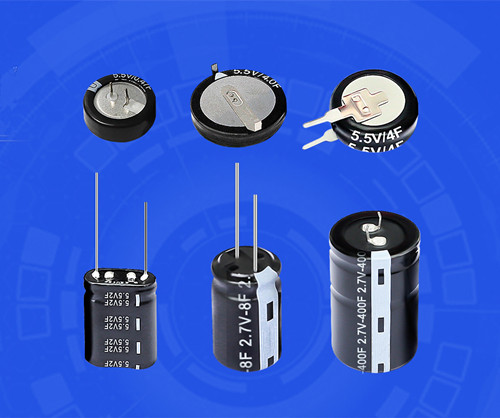When your phone suddenly runs out of battery, what do you do? Is there an electronic component or device that can charge in just seconds and provide continuous power output?
Yes, the component you're looking for is a supercapacitor.
Supercapacitors, also known as gold capacitors or Farad capacitors, are a type of energy storage component. Unlike traditional capacitors, they don't undergo chemical reactions during the energy storage process, and this process is reversible. As a result, supercapacitors offer fast charging and discharging speeds, high power density, wide temperature ranges, and a long cycle life, making them ideal for many electronic products.
The supercapacitor's numerous advantages are all thanks to the key components working together in harmony.
Composition of Supercapacitors
Supercapacitors consist of electrodes, electrolytes, separators, current collectors, and casings.
Roles of Supercapacitor Components
Electrodes
The electrodes of supercapacitors are typically made from high surface-area materials like activated carbon or graphene. The surface of these materials is full of tiny pores, similar to a sponge, which can absorb large amounts of charge while providing excellent conductivity for charge storage.
Electrolyte
The electrolyte fills the space between the two electrodes and has a high ionic conductivity. The ions move quickly under the influence of an electric field, enabling fast charge storage and release, which contributes to the supercapacitor’s rapid charging and discharging capabilities.
Separator
The separator is typically made from porous insulating materials, such as polypropylene or polyethylene films. These materials contain tiny holes that allow ions from the electrolyte to pass through, while blocking electrons. This ensures the positive and negative electrodes don't touch, preventing short circuits and maintaining the supercapacitor’s safety.
Current Collector
The current collector acts as a bridge for the supercapacitor, usually made from highly conductive metal materials like aluminum or copper foil. Its purpose is to transfer current from the electrodes to the external circuit without obstruction, delivering power.
Casing
The casing of a supercapacitor is typically made from metal or plastic materials. Its function is to protect the internal structure of the supercapacitor from external factors like moisture and dust. It also helps prevent damage to the supercapacitor in case of collisions or pressure.
Together, the electrodes, electrolyte, separator, current collector, and casing form the essential components that allow supercapacitors to play a vital role in electronic products.
This article is provided by JYH HSU (JEC) Electronics. JEC is a research, development, production, and sales-oriented company specializing in manufacturing and selling various electronic components such as capacitors and resistors.
Post time: Aug-05-2025

